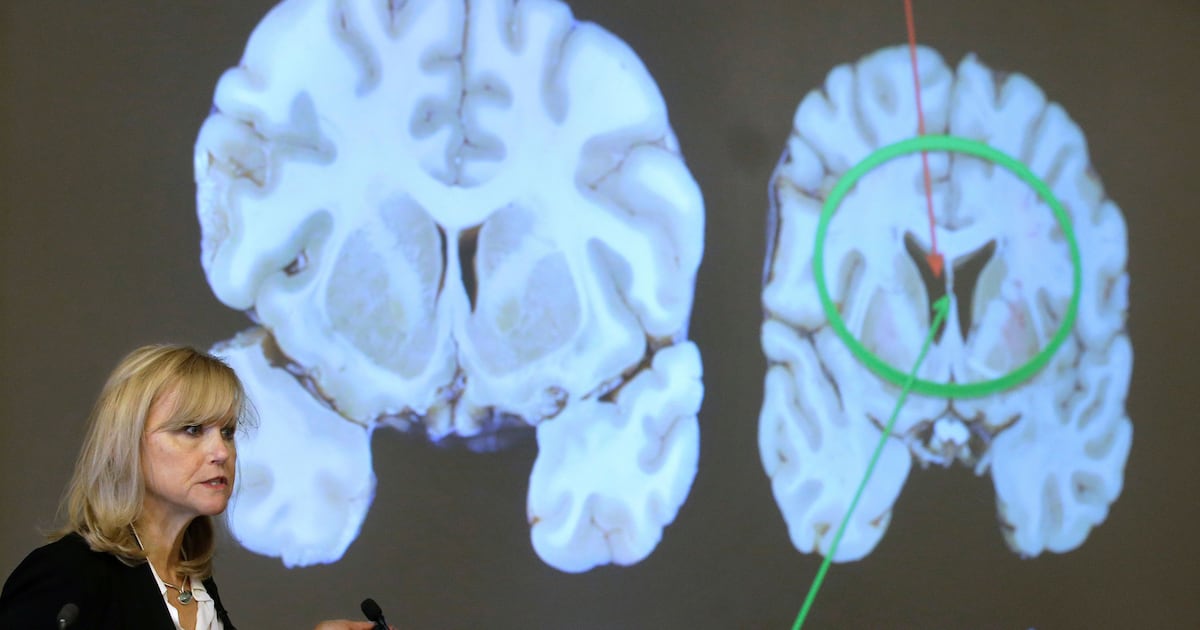Health
New Study Reveals Genetic Damage Linked to CTE in Athletes

Research into chronic traumatic encephalopathy, or CTE, has uncovered significant genetic damage in the brains of individuals suffering from this neurological disease. Traditionally associated with athletes who endure repeated head trauma, particularly in contact sports, this new evidence suggests a deeper biological impact, resembling the effects seen in patients with Alzheimer’s disease.
The study, published on March 15, 2024, in the journal Science, involved the examination of brain tissue from football players and others diagnosed with CTE. The findings revealed extensive genetic damage, equating to the cognitive decline typically associated with centuries of aging. CTE symptoms, which can manifest years after repeated head injuries, include memory loss, anxiety, depression, and aggressive behavior. Although most common in sports like football, hockey, and soccer, CTE has also been identified in soldiers affected by blasts and victims of domestic violence.
Dr. Chris Walsh, the study’s co-author and chief of the Division of Genetics and Genomics at Boston Children’s Hospital, emphasized the importance of this research in understanding CTE as a distinct neurodegenerative condition. He noted, “We feel like this study helps establish that CTE is something distinct from just repetitive head trauma. It represents a more gradually developing pathological process and is a well-defined entity.”
Despite the advances in understanding CTE, current diagnostic methods remain limited. The only definitive diagnosis occurs via post-mortem examination of brain tissue, where scientists look for an abnormal accumulation of tau protein. This protein, which stabilizes certain brain cell structures, can cause damage when present in excess, mirroring the conditions found in Alzheimer’s disease.
The research utilized advanced sequencing technology to analyze the genes of single cells within hundreds of neurons in the prefrontal cortex, a brain region critical for decision-making. The study compared brain samples from four groups: individuals diagnosed with CTE, those with head injuries but no CTE diagnosis, individuals without head injuries, and Alzheimer’s patients. The analysis showed that cells from those with CTE exhibited genomic damage similar to that of Alzheimer’s patients, while those with head injuries but no CTE diagnosis displayed no such damage.
“The abnormal environment created by the repeated trauma damages the genomes of the cells,” Dr. Walsh explained. This insight into the mechanisms underlying CTE could pave the way for developing potential treatments. Given the similarities between CTE and Alzheimer’s pathology, therapies designed for Alzheimer’s patients may eventually benefit CTE sufferers, although further research is essential.
The study builds on prior research indicating that brain damage from repeated head impacts can manifest earlier than the accumulation of tau protein typically associated with CTE. For instance, a **2023 study** highlighted that the activation of the brain’s immune cells correlates with the duration of an athlete’s exposure to contact sports. Additionally, a **2020 study** found that the risk of developing CTE doubles for every **2.6 years** of football play. Alarmingly, cases of CTE have been documented in individuals as young as **17 years old**, raising concerns about the cumulative effects of head trauma throughout an athlete’s career.
In response to growing awareness of CTE, the NFL has implemented several rule changes and equipment modifications to reduce head injury rates. Data from the **2024 season** indicates a notable reduction in concussions, marking the lowest numbers recorded since tracking began in **2015**. Other leagues, including the NHL, MLS, and the English Premier League, have also instituted measures aimed at minimizing concussion risks among players.
Experts caution that any head impact can lead to damage, not just concussions. Some advocates suggest that parents consider delaying their children’s participation in tackle football until they reach **14 or 18** years of age, rather than allowing them to start playing as young as **5**. Additionally, organizations like the American Youth Soccer Organization advise against heading the ball before the age of **10**, and discourage early training in this area.
The ongoing investigation into CTE underscores the critical need for further understanding of this condition and the long-term effects of head trauma. As research progresses, there is hope for improved diagnostics and treatment options that could significantly impact the lives of those affected by this debilitating disease.
-

 World4 months ago
World4 months agoScientists Unearth Ancient Antarctic Ice to Unlock Climate Secrets
-

 Entertainment4 months ago
Entertainment4 months agoTrump and McCormick to Announce $70 Billion Energy Investments
-

 Lifestyle4 months ago
Lifestyle4 months agoTransLink Launches Food Truck Program to Boost Revenue in Vancouver
-

 Science4 months ago
Science4 months agoFour Astronauts Return to Earth After International Space Station Mission
-

 Technology2 months ago
Technology2 months agoApple Notes Enhances Functionality with Markdown Support in macOS 26
-

 Top Stories3 weeks ago
Top Stories3 weeks agoUrgent Update: Fatal Crash on Highway 99 Claims Life of Pitt Meadows Man
-

 Sports4 months ago
Sports4 months agoSearch Underway for Missing Hunter Amid Hokkaido Bear Emergency
-

 Politics3 months ago
Politics3 months agoUkrainian Tennis Star Elina Svitolina Faces Death Threats Online
-

 Politics4 months ago
Politics4 months agoCarney Engages First Nations Leaders at Development Law Summit
-

 Technology4 months ago
Technology4 months agoFrosthaven Launches Early Access on July 31, 2025
-

 Entertainment4 months ago
Entertainment4 months agoCalgary Theatre Troupe Revives Magic at Winnipeg Fringe Festival
-

 Top Stories7 days ago
Top Stories7 days agoFamily Remembers Beverley Rowbotham 25 Years After Murder





















